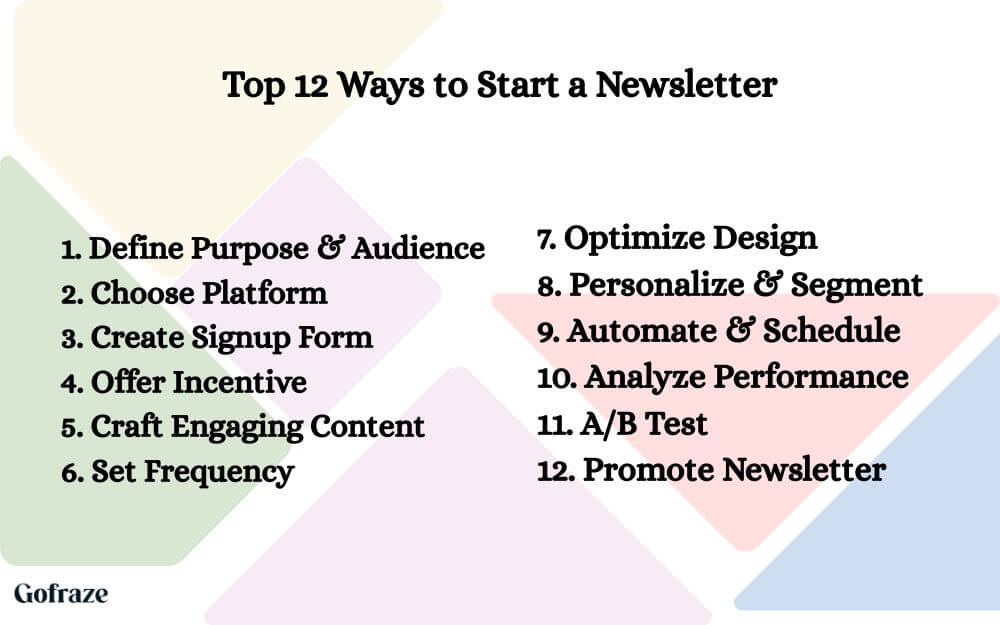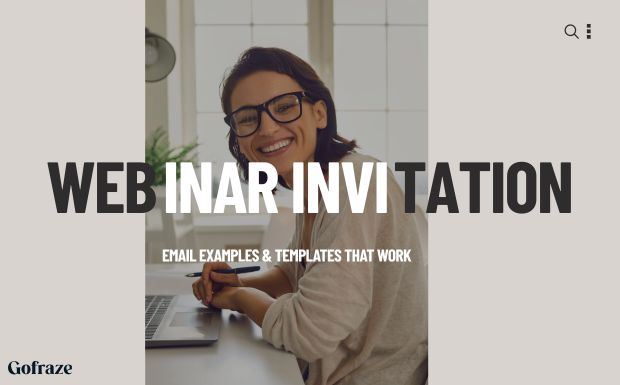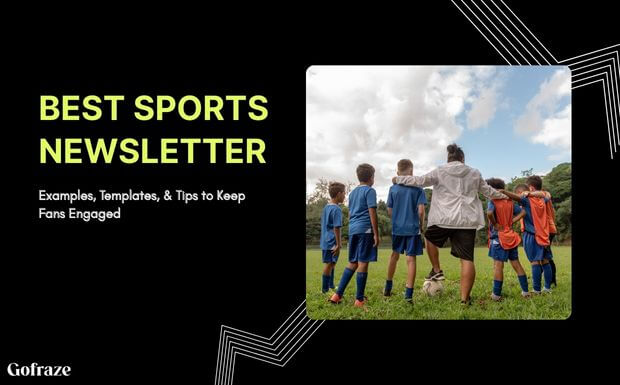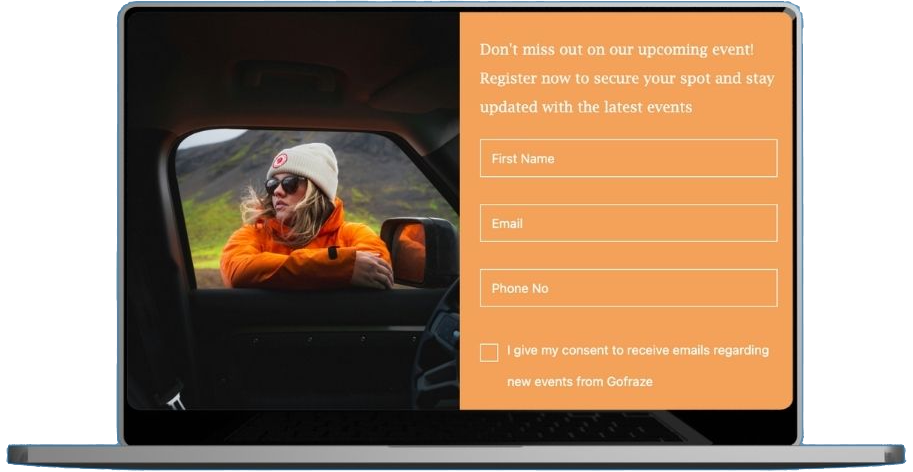Email Marketing for Car Dealerships: Strategies, Ideas & Best Practices
Explore powerful email marketing strategies for car dealerships. Learn to attract, engage, and convert leads into loyal customers with ease.
In the digital world, staying connected with your audience is essential for building relationships, establishing authority, and growing your brand. One of the most effective ways to do this is by starting a newsletter. Whether you’re an entrepreneur, blogger, content creator, or business owner, an email newsletter can help you engage with your audience directly in their inbox.
But where do you start? What tools should you use? How do you make your newsletter stand out? In this guide, we’ll cover everything you need to know about how to start a Newsletter, from why it’s worth it to the best 12 ways to launch it successfully. We’ll also discuss some top tools, including Gofraze, to help you manage your email marketing efficiently.
A newsletter is a form of email communication that allows businesses, creators, and individuals to share valuable content, updates, and promotions with a list of subscribers. Newsletters can be used for various purposes, such as:
Unlike social media, where algorithms dictate visibility, newsletters give you direct access to your audience, ensuring your message reaches them without interference.
If you’re still wondering whether starting a newsletter is worth your time and effort, here are some compelling reasons why you should consider it:
Email marketing gives you full control over your audience. Unlike social media, where reach depends on platform algorithms, newsletters land directly in subscribers’ inboxes, ensuring better visibility.
By consistently delivering valuable content, you establish yourself as a trusted expert in your field. People are more likely to engage with your business if they trust your insights.
A newsletter is an excellent way to direct readers to your latest blog posts, product pages, or special offers, boosting website traffic and engagement.
A well-structured newsletter can help generate revenue through:
Compared to paid advertising, email newsletters are relatively low-cost yet deliver higher ROI. According to research, email marketing generates $42 for every $1 spent!
Now that you understand the benefits, let’s explore the 12 best ways to start a newsletter successfully.

Before you start sending newsletters, you need to be clear about why you are starting one and who will be reading it. Understanding your purpose and audience helps you craft content that resonates, increasing engagement and retention. A business newsletter, for example, will differ from a personal blog update or an educational series.
✔ Ask yourself:
✔ Why this is important:
Choosing the right email marketing platform is crucial for managing and automating your newsletter. The right tool will help you schedule emails, personalize content, and analyze performance. With so many options available, picking one that suits your needs can make a huge difference.
✔ Popular email marketing platforms:
✔ Why this matters:
Your email list won’t grow unless you make it easy for people to subscribe. A well-designed signup form and landing page make the process seamless and encourage more people to join your newsletter. You should strategically place signup forms across different platforms for maximum visibility.
✔ Best places to add signup forms:
✔ Why this works:
People are more likely to give you their email address if they receive something valuable in return. Offering a lead magnet (free valuable content) increases the chances of gaining subscribers and keeps them engaged from the start.
✔ Popular lead magnets:
✔ Why incentives boost subscriptions:
The success of your newsletter depends on delivering engaging and valuable content that keeps subscribers interested. If your emails don’t provide useful insights, updates, or solutions, readers may lose interest and unsubscribe. The key is to create content that educates, entertains, or inspires action while maintaining a conversational and relatable tone. A well-written newsletter builds trust and strengthens relationships, encouraging subscribers to stay engaged.
✔ Tips for writing great newsletter content:
✔ Why valuable content is key:
Finding the right email frequency is crucial for keeping subscribers engaged without overwhelming them. Sending too many emails can lead to unsubscribes, while infrequent emails may cause subscribers to forget about your brand. The best approach is to set a consistent schedule that aligns with your audience’s expectations and your content strategy. Testing different frequencies can help determine what works best.
✔ Recommended email frequencies:
✔ How to decide:
A well-designed newsletter enhances readability and improves subscriber engagement. A cluttered or poorly formatted email can discourage readers from interacting with your content. Using clean layouts, structured headings, and visually appealing elements helps ensure your message is clear and easy to digest. Mobile optimization is also essential, as many users read emails on their smartphones.
✔ Best email design practices:
✔ Why design matters:
Sending generic emails to all your subscribers can lead to lower engagement rates. Personalization allows you to address subscribers by name, while segmentation helps send tailored content based on their interests, behaviors, or past interactions. This approach makes your emails more relevant, improving both open rates and conversions. When people feel like your emails are specifically for them, they’re more likely to engage with your content.
✔ How to personalize newsletters:
✔ Why this improves engagement:
Manually sending emails can be time-consuming, especially as your subscriber list grows. Email automation allows you to send emails at the right time without manual effort, ensuring a seamless communication flow. By scheduling emails in advance and setting up automated sequences, you can consistently engage your audience, send timely updates, and improve efficiency. Automation also helps in lead nurturing, ensuring that potential customers stay engaged over time.
✔ Ways to use automation:
✔ Why automation is essential:
To ensure your newsletter is effective, you need to track and analyze key performance metrics. Monitoring your email campaigns allows you to see what works and what doesn’t, helping you refine your strategy over time. By paying attention to open rates, click-through rates, and unsubscribes, you can make data-driven decisions to improve engagement and conversions. Regular analysis helps you identify patterns and optimize your future campaigns for better results.
✔ Important metrics to track:
✔ Why tracking matters:
A/B testing, also known as split testing, helps you compare different versions of an email to determine which one performs best. Testing various elements—like subject lines, layouts, and call-to-action (CTA) buttons—allows you to optimize your newsletters for better engagement. This method provides data-driven insights, helping you refine your email marketing strategy over time. Small tweaks in design or wording can lead to significant improvements in open and click-through rates.
✔ What to test:
✔ Why A/B testing is effective:
Once your newsletter is up and running, actively promoting it is crucial for growing your subscriber base. Relying on organic growth alone can be slow, so using multiple channels to reach potential subscribers is essential. Social media, website popups, and lead generation ads can all help attract a wider audience. A well-promoted newsletter increases visibility, enhances brand awareness, and boosts overall engagement.
✔ Ways to promote your newsletter:
✔ Why promotion is necessary:
Managing a newsletter efficiently requires the right tools to help with automation, segmentation, and analytics. A good email marketing platform allows you to schedule emails, track performance, and personalize content, ensuring maximum engagement. With the right tool, you can save time, streamline workflows, and optimize your email strategy for better conversions. One such powerful platform is Gofraze, known for its advanced automation, audience segmentation, and intuitive email-building features.
✔ Why Gofraze is a great choice:
Learn the best strategies and tools to create, grow, and manage a successful newsletter that keeps your audience engaged.
Starting a newsletter is one of the best ways to build lasting relationships with your audience. By following the 12 strategies outlined above, you can create an engaging and valuable newsletter that keeps your readers coming back.
If you’re ready to take action, start by choosing an email marketing tool like Gofraze to streamline your efforts and maximize your impact.
💡 Pro Tip: Don’t wait for the perfect moment—start your newsletter today and refine it as you go!

Explore powerful email marketing strategies for car dealerships. Learn to attract, engage, and convert leads into loyal customers with ease.

Learn how to craft the perfect webinar invitation email using key tips, templates, and examples to boost sign-ups and engagement.

Discover winning sports newsletter examples, essential elements, and expert tips to craft high-impact email campaigns your fans will love.

Get unlimited forms that turn your traffic into real subscribers — totally free
Start now - free forever